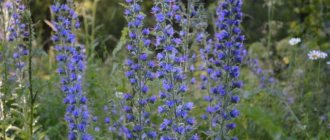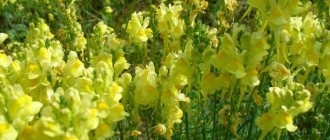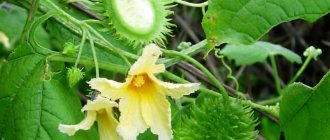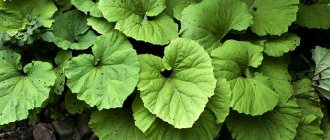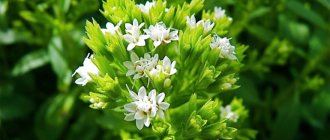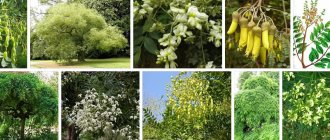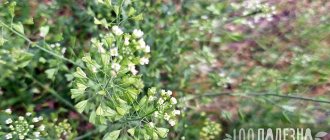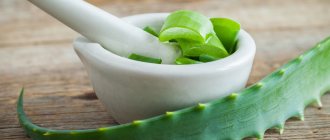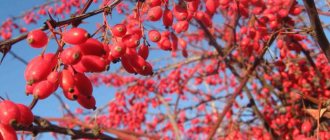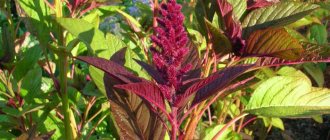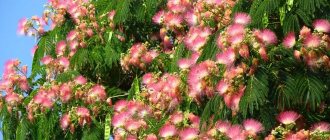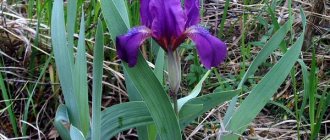Botanical description
Regardless of cultivation conditions, this plant crop is a herbaceous shrub with a thin, elongated stem part of a bright green hue. The stem reaches 600-1700 mm. It can be erect or inclined towards the soil, smooth or with a moderate edge.
The foliage is rich, green, small in size, loose, up to 2.5 cm long, alternate, growing on shortened petioles or directly on the stem part. Bright lemon-colored flowers look beautiful and elegant. They look like a neat butterfly that has folded its wings.
The flowers are located on top of the stems, forming voluminous loose clusters. Like any legume, the fruit of gorse is a bean. It is slightly curved, linear, smooth, 2-leaf. In the inner part of the pod there are shiny, dark, almost black seeds.
Gorse is a shrub 20-100 cm tall
Flower formula
Formula of gorse flower: Ch3.2L1.2(2)T(5+4)1P1.
2. Gorse - planting and care
2.1.When it blooms
Late spring – early summer.
↑ Up,
2.2.Reproduction, growing from seeds
Seeds can be sown in early spring. Stem cuttings.
↑ Up,
2.3.Transplant
Only if necessary. Gorse takes a long time to grow when the root system is damaged - try to handle it together with a lump of earth.
2.4.Growing conditions - temperature
From spring to autumn, the usual room temperature of 18 - 22 ° C is good. In winter, the plant must be given a rest period in a cool place with a temperature of about 10 ° C. It tolerates short frosts.
↑ Up,
2.5.Lighting
A well-lit place with direct sunlight in the evening or morning.
2.6.Keeping at home
This hardy plant is ideal for beginning gardeners. Trim gorse shoots every year to maintain a compact, bushy form. Try not to cut off old branches - they take a long time to recover. Remove faded flowers. Gorse will appreciate being in the fresh air during the warm season.
↑ Up,
2.7.Watering
During the growing season, watering is plentiful and quite frequent. In winter, reduce watering.
↑ Up,
2.8.Soil
Adapts well to almost any type of soil, but prefers nutrient-poor soils with good drainage.
2.9.Fertilizer
During the period of active growth, monthly fertilizers with a high potassium content.
↑ Up,
2.10.Spraying
It is advisable to spray periodically.
2.11. Pests and diseases of gorse
Purpose.
Note.
Hydroponics.
Chemical composition
The healing qualities of guillemot are based on the beneficial elements contained in its rhizomes, stems, foliage, and flowers. The following substances are included in gorse:
- flavonoids;
- resin;
- methylcytisine;
- cytisine;
- thyroxine;
- saponics;
- tanning;
- ethereal (approximately 0.03-0.05%);
- organic;
- genistein and luteolin;
- ascorbic acid.
The composition also contains the following microelements:
- silicon;
- phosphorus;
- manganese;
- barium;
- potash;
- calcium
It is worth remembering that the whole herb, and especially the seeds, are poisonous and, in a certain dosage, dangerous to life.
Pharmacological properties
The composition of terza is unique, so it is used in the treatment of various ailments. The use of the plant in alternative medicine can provide the following therapeutic effects:
- vasodilation;
- elimination of bacteria;
- general strengthening;
- separation of bile;
- bleeding stop;
- relaxation.
Healers use the plant to complement therapy:
- malaria;
- asthma;
- jaundice;
- rheumatic pain;
- constipation;
- uterine bleeding;
- lichen lesions;
- scrofula;
- low blood pressure;
- gout;
- elimination of warts and calluses.
Indications for use
The healing qualities of the plant crop have been little studied, and medicines based on it are almost never used by Russian medicine. But in America, medicines created on the basis of gorse flowers and seeds work well together in treating oncology, in particular gastrointestinal tumors.
Research and testing of an infusion from the above-ground parts of the plant has yielded a positive effect in the prevention and treatment of thyroid pathologies.
In clinical trials, a positive effect of the plant culture was discovered in the following pathologies:
- Chronic bronchitis;
- Bronchiectasis;
- Metabolic polyarthritis;
- Urolithiasis disease;
- Cholecystitis and hemorrhoidal manifestations.
Hypothyroidism and metrorrhagia are also well treated with herbs.
Gorse treats metabolic polyarthritis and bronchitis
Gorse in the recipes of traditional healers
Traditional medicine is rich in various effective medicines made from natural ingredients.
One of the most commonly used medicinal plants is gorse. It has been used for the treatment of various pathologies since ancient times. Gorse was written about as a medicinal plant in the teachings of the Middle Ages. In Italy and France, its stems were used to make burlap, which was not inferior in quality to current products. A fairly stable yellow dye was obtained from gorse flowers, which was used to dye flax wool. The plant was used, or rather the dye obtained from its stems and foliage in the production of carpets. As you can see, the name of the plant is due to its coloring properties.
Application
The healing properties of the plant have not been fully studied to date, so preparations from it are practically not used in official medicine. Gorse, or rather drugs based on it, are used in the USA. Remedies from seeds and flowers in combination with medications are used to treat tumors, in particular the gastrointestinal tract. In addition, according to clinical trials, an infusion from the plant helps treat thyroid pathologies. Moreover, gorse products are recommended to be taken for the treatment of chronic bronchitis, bronchiectasis, hemorrhoids, cholecystitis, and urolithiasis.
The plant is also valued by homeopaths. The essence of young shoots with flowers and leaves is used as a natural antibiotic. Gorse is also widely used in dermatology. Compositions based on it are used for the treatment of psoriasis, hypothyroidism, accompanied by itchy dermatosis.
The plant is also used in cooking. Flowers and young shoots are eaten. In addition, gorse is an original decorative subshrub. Gardeners love it. Plants are used to decorate borders and flower beds. In addition, gorse is considered an excellent honey plant.
Botanical characteristics
Gorse is a profusely flowering shrub belonging to the genus Gorse and the Moth family and reaching a height of sixty centimeters or more. The plant is equipped with alternate simple entire-marginal narrow-lanceolate leaves, bisexual, yellowish zygomorphic, collected in long racemose inflorescences, flowers located at the ends of the branches. The fruits are beans. The plant blooms at the end of spring, and the fruits begin to ripen towards the end of summer.
Russia, Western Siberia, Ukraine, the Caucasus are the habitat of gorse. It grows mainly in dry light forests, pine forests, on rocky slopes, and in thickets of bushes.
Procurement of raw materials
The raw materials for the preparation of medicinal products are the leaves, flowers and rhizomes of the plant in question. All parts of gorse must be harvested during the flowering period. Inflorescences are collected separately from other ground parts. It is recommended to collect rhizomes at the beginning of the autumn period. The rhizomes are dug up, washed, cut into small pieces and dried in a room with sufficient ventilation, or in a special dryer at a temperature not exceeding fifty degrees.
Properly prepared raw materials have a green color. It is poured into cardboard boxes or linen bags and placed for storage in a dry room with good ventilation. It is recommended to store gorse raw materials separately. The duration of storage and use of blanks is one year.
Composition and benefits
The widespread use of gorse is due to its chemical composition and unique pharmacological properties. The plant contains quite a large amount of useful and healing substances:
- alkaloids;
- cytisine;
- methylcytisine;
- sparteine;
- glycosides;
- tannins;
- flavonoids;
- organic acids;
- triterpene saponins;
- bitter substances;
- essential oils;
- mucus;
- mineral salts;
- coloring matter.
Thanks to this composition, the plant has a lot of healing properties. The following effects of drugs based on the plant in question are known: diuretic, choleretic, laxative, blood purifying, analgesic, lactogonic, antibacterial, tonic, hemostatic, immunostimulating, restorative, antitumor and anthelmintic.
Article on the topic: Common cucumber - beneficial properties, description
Medicinal compositions from gorse contribute to:
- suppression of the growth and reproduction of pathogenic microorganisms;
- strengthening the immune system;
- relief of pain syndrome;
- minimizing inflammatory processes;
- vasodilation;
- stopping bleeding;
- normalization of metabolism;
- preventing the development of tumors;
- therapy for intestinal cancer, edema, bronchial asthma, migraine, rickets, psoriasis, diathesis, arthritis, rheumatism, pyoderma, atopic dermatitis, furunculosis, scrofula, lichen.
Folk remedies
Calluses, warts: use of healing tincture
Grind dried flowers and fresh plants. Fill fifty grams of medical alcohol - half a liter. Place the tightly closed container in a cool place for a week. Use the filtered composition as a lotion on the affected areas. Before applying the medicine, do not forget to cover healthy skin with a patch. The duration of the therapeutic course is a week.
Gout: Herbal Therapy
Mix leaves and flowers of gorse with tricolor violet, nettle and birch buds in equal proportions. All components must be dried and crushed. Steam twenty grams of raw material in three hundred milliliters of boiling water. Let the composition sit for half an hour. Drink ½ cup of the filtered drug three times a day.
Preparation of a remedy with a laxative, diuretic and choleretic effect
Fill a spoonful of finely chopped gorse leaves with half a liter of boiled water. Place the container on the stove, wait until it boils, and then simmer for about twenty minutes. Consume 50 ml of filtered medicine twice a day.
A drug to normalize the functioning of the thyroid gland
Mix the leaves and flowers of the plant. Brew ten grams of raw materials in 300 ml of boiling water. It is preferable to infuse the product in a thermos for two hours. Take twenty milliliters of medication three times a day.
Skin pathologies: the use of healing baths
Steam fifty grams of the chopped aerial part of the plant in a liter of just boiled water. Place the container with the composition in a warm place for two hours. Pour the filtered infusion into the bath. The duration of water procedures is a quarter of an hour. Therapeutic baths are recommended to be taken once a week.
Infusion for the treatment of hypotension
Combine gorse with hyssop, rue, St. John's wort, chamomile, and leuzea in equal proportions. Brew a tablespoon of the mixture in a glass of boiled water. Let the product brew. Strain and drink a quarter glass of the drink three times a day.
Preparation of a laxative drug
Pour 10 grams of crushed dried gorse seeds into 300 ml of boiling water. Leave the composition in a warm place for six hours. After straining, take twenty milliliters of the drug at least six times a day.
Treatment of hepatitis and cirrhosis with infusion
Combine gorse leaves in equal proportions with capitula, centaury, eyebright, blue cornflower, horse chestnut, hop heads, gravilate, corn silk and rose hips. Steam a spoonful of raw materials in half a liter of just boiled water. Remove the container from heat for two hours. Take 100 ml of strained medicine twice a day.
Contraindications!
The plant is poisonous, so you must be as careful as possible when collecting raw materials and preparing preparations. Do not exceed the dosages and proportions specified in the recipes and do not abuse drugs. The appearance of nausea, vomiting, malaise, headaches, dizziness indicates an overdose. In this case, rinse your stomach, call a doctor and refrain from taking gorse medicine.
Preparations from this plant should not be taken in case of individual intolerance, pregnancy and breastfeeding, arterial hypertension and coronary artery disease. Do not give gorse medicine to small children. Be carefull.
Habitat
Chistik is a fairly unpretentious plant. The shrub behaves well in arid and temperate climatic conditions and is not afraid of sunlight and infertile soil.
The only thing that gorse does not like is an excess of moisture, so you will not find the plant near ponds or in swamps.
The culture is quite widespread. Terza grows throughout European territory, from the Mediterranean Sea to the Scandinavian meadows. The plant can be seen in Turkish and Caucasian spaces.
In our country, the medicinal crop grows in an average climate in the Cis-Urals and Western Siberian territory. Gorse likes to “settle” in forest clearings, hilly slopes, and thickets of bushes, preferring soils with a predominance of sand and limestone.
Regions of distribution on the map of Russia
Healers especially value the root of the plant, which, like the above-ground part, has a rich range of healing qualities.
Growing gorse
Gorse is grown by seed or cuttings. Seeds are collected in August, when the beans are fully ripe. If the fruits turn brown, this means they are ripe. Seeds extracted from cracked beans are dried and immediately sown in open ground. Maintain a sowing depth of 3 cm. The seeds are lightly sprinkled with soil and watered. The material hardened over the winter germinates in the spring. The bushes bloom only at two or three years of age.
Certain varieties of gorse are grown using apical cuttings taken in June. Rooting occurs successfully without any preparatory processing measures. In order for roots to form faster, the seedlings are covered with protective material or placed in greenhouses. The percentage of rooted seedlings is low compared to the effectiveness of seed cultivation.
Areas of application
In alternative medicine, medicinal infusions, decoctions and alcohol extracts are made at home from dried flowering branches to cure various pathologies. Plant culture is used to decorate flower beds, park areas, and mixboards.
Unopened flowers are heat-treated and can be pickled and eaten. In some Mediterranean countries, the plant is used to make a strong canvas material.
Previously, gorse flowers were used to create a long-lasting yellow dye that was used to dye wool and linen, and was also used to dye carpets. That is why the plant has such an unusual name.
In medicine
In alternative medicine, water gorse infusion is quite actively used as a remedy:
- stopping blood;
- bile drainer;
- strengthening;
- dilating blood vessels;
- antibacterial.
Water infusion of gorse
The use of preparations based on thyme is especially effective in the prevention and treatment of thyroid pathologies. The essence of freshly collected gorse shoots is used by healers as a natural antibiotic.
In homeopathy
Using the homeopathic vasodilating property with the powerful antibacterial effect of aqueous gorse extracts, healers use them to treat chronic pathologies of the respiratory system, in particular the chronic form of bronchitis and asthmatic type of disease.
The herbal medicine is popular as a strong diuretic and laxative. Gynecological preparations in homeopathy are used as a good composition for a tonic and hemostatic effect in the uterus.
Different types of cooking herbs are popular for headaches, rickets, and hypertension.
In dermatology
The plant is actively used in skin treatment. Use alcohol tinctures and water decoctions for illness:
- furunculosis;
- dermatitis;
- dermatomycosis;
- pyodermatitis;
- allergic dermatitis.
In addition, an infusion of the flower and fruit parts in lotions is used on dried calluses and in the treatment of warty growths. Chopped freshly picked leaves along with green beans.
It is also used to treat rough callous growths and warts. For such lesions as abscesses, lichen, scrofula, a tincture based on terza helps well. Use it for wiping or when bathing.
Gorse is used to heal rough calloused growths
Since an antibacterial effect has been identified, the plant culture is recommended as a composition for problems with going to the toilet (in urology and nephrology).
They also gargle for fungal infections of the skin, boils, lichen, scrofula.
For other purposes
Once upon a time in Paris and Italy, workers made fabrics from gorse fibers. They resembled modern burlap. Today, the plant crop is popular in agriculture, namely, when planted as a top dressing, a source of nitrogenous substances, which makes it possible to increase the amount of harvest.
The plant is also planted in the country. With its help, spectacular flower gardens are created in the landscape. Another domestic use is the strengthening of hilly slopes. In the Caucasus, gorse is used as a spice; it is added like capers to various dishes.
Plant in the garden
In landscape design, gorse is valued for its bright and abundant flowering. Bushes or small trees can be planted singly at the entrance to the house or along the fence. Creeping and low-growing forms are suitable for decorating rocky slopes and hillocks with a southern or southeastern orientation. The branched rhizome strengthens the soil well and can be used to prevent soil collapse.
The plant is suitable for decorating rock gardens, rockeries and sometimes mixborders. When composing compositions, gorse combines better with trees and shrubs. These can be juniper, cotoneaster, euonymus, yew, barberry, elecampane or buzulnik.
Medical use
Traditional healers have been using gorse for many years to cure human ailments. The recipe for making medicines depends on the purpose of using the raw materials.
With reduced thyroid function
You will need a spoonful of stems and leaves. The raw material must be filled with 250 ml of chilled water, boiled and immediately filtered. Drink in small sips throughout the day.
For dermatitis
4 tablespoons of dried raw materials are boiled in 0.5 liters of water for 30 minutes. The broth should stand for 60 minutes. Then the product must be filtered and poured into the evening bath. It should be taken for 20 minutes, 3 times a week.
Infusion recipes
The recipe is good for rinsing and compresses. You will need 1 tbsp of dried raw material, which is brewed in 500 ml of boiling water. You need to leave for at least 2 hours, then strain and consume a spoon 3 times a day.
Another recipe helps women with uterine bleeding. To make it, you will need 3 tablespoons of dried raw materials, which are crushed, brewed with 250 ml of boiling water, infused for 60 minutes, and filtered. For therapy you need to consume 1 tablespoon 3 times a day.
Dried gorse
Types and varieties
Gorse is a non-thorny, fast-growing shrub that grows in the wild throughout Europe and Siberia. The plant reaches a height of up to 100 centimeters, and the diameter of the bush is about a meter. Shoots with weak branching, covered with smooth, green leaf plates. The inflorescences are racemose, located at the tips of the shoots. Gorse blooms from June to July.
Gorse Spanish - a shrub with thin, weakly branched shoots with small, dark green leaf blades. An adult crop forms a spherical crown and reaches a height of up to 60 centimeters. The inflorescences are bright yellow, racemose with a light, pleasant aroma. Flowering time lasts from late May to late June.
Gorse Donskoy is a perennial, branched shrub reaching up to 50 centimeters in height. The leaf blades are bluish-green, lanceolate. The inflorescences are racemose, loose, yellow in color. After flowering, seeds form in the form of beans. Flowering time lasts from June to July.
Gorse Arrowhead - the plant has long creeping shoots reaching 30 centimeters with dense light green foliage. The leaf blades are elliptical and small. Inflorescences are racemose, yellow in color. Flowering time occurs at the beginning of summer.
Yellow Gorse is a low-growing, beautifully flowering shrub, reaching a height of up to 150 centimeters with erect, thin branches with dense bluish foliage. The inflorescences are racemose, bright yellow, located at the tops of the shoots. The crop blooms from June to July, after which seeds form in the form of beans.
Thorny Gorse
It is a thorny evergreen shrub with dense, branched shoots covered with many thorns. The leaf blades are bluish-gray, small, elliptical in shape. Inflorescences are yellow, racemose. The crop blooms in mid-summer.
German gorse is a deciduous shrub, reaching a height of up to 60 centimeters and having a diameter of up to 120 centimeters. The branches are thin with slight pubescence and a small number of thorns. The leaf blades are small, elliptical, green. Inflorescences are yellow, racemose. The flowering time lasts from June to July, after which seeds in the form of beans begin to form.
Scythian gorse - the shrub reaches a height of up to 26 centimeters, has twisting shoots with simple, narrow-lanceolate silvery leaf plates. The inflorescences are yellow, racemose, located at the ends of the shoots. The crop blooms in May. Seeds in the form of beans ripen in August.
Lydian gorse is a low-growing shrub that reaches a height of up to 100 centimeters and has a compact rounded crown with light green dense foliage. The stems are thin, without thorns, erect. Inflorescences are yellow, racemose. Flowering time lasts from early May to early June.
Gorse English
The culture grows up to one meter in height. The shoots are thin, branched, erect with long thorns. The leaf blades are narrow-linear, green, small. The inflorescences are racemose, yellow in color with a pleasant aroma. Flowering time occurs in mid-summer.
Gorse Fluffy is a subshrub with creeping shoots up to 40 centimeters long. The leaf blades are small, elliptical, gray-green in color. The inflorescences are racemose, yellow, located at the ends of the branches. The crop blooms from May to June.
Creeping Gorse is a subshrub with creeping shoots reaching a length of up to 30 centimeters with dense light green foliage. Inflorescences are yellow, racemose. After flowering, seeds form in the form of beans. Flowering time occurs in mid-summer.
Gorse flax is a perennial shrub with erect stems reaching a height of up to 100 centimeters. The leaf blades are narrowly elliptical, long, dark green. The inflorescences are racemose, light orange in color. Flowering time lasts from June to July.
